X99 PLATFORM SPECIFICATIONS
We’ll be covering this topic more into detail in our ASRock X99 OC Formula review, but here’s a quick breakdown of the new features and specifications with the X99 chipset.
The X99 platform features a revision of the older LGA2011, this means that backward compatibility with older 3xxx and 4xxx CPUs will not be possible. This is because Haswell-E (5xxx) CPUs and the x99 chipset is the first desktop platform to support the all new DDR4 memory standard, which features a base frequency of 2133MHz. Motherboards will support either one DIMM per channel or two DIMMs per channel, the latter of which will allow for up to 64GB of memory with current 8GB DDR4 DIMMs.
CPUs that support 40 PCI-E lanes will allow multiple PCI-E configurations ranging from x16/x16/x8 to x8/x8/x8/x8/x8 the latter of which is not actually supported by any modern GPUs, but can be useful for high-speed storage solutions. For the 28 lane 5820K the options are limited to x16/x8/x4 or x8/x8/x8. – To know for sure, you’ll want to check your motherboard’s manual.
We also see support for 10 SATA 3.0 (6 Gbps) ports from the chipset, only six of them being RAID capable. This is a strange limitation, which likely means that the chipset uses some sort of SATA hub on the die to allow for the additional ports. Regardless, this means that you can expect at least 10 SATA ports, with some motherboard manufacturers adding more through additional SATA 3.0 controllers on some higher-end boards.
Motherboard prices range from under$200 to above $400, with lower-end boards supporting at least 2-way SLI/CrossFireX and four DIMMs per channel for memory with form-factors ranging from MicroATX to eATX. This makes the cost of entry quite a bit more expensive compared to Z97, but still quite affordable with all things considered.
MARKET AND COMPETITION
At this point, you might be asking who Intel is targeting with Haswell-E and more specifically the Core i7 5960X? As we see things, Intel is clearly going hard after the professional market and the eight-core, hyper-threaded 5960X CPU should be immensely useful in video editing, 3D rendering, and any other heavily threaded tasks.
What’s more interesting though, is with the release of X99 platform and Haswell-E, Intel has finally brought their six-core CPU down to a price that is under $400. That makes it a very appealing option for Twitch streamers and “YouTubers” who need more CPU power for production but aren’t making enough revenue to justify spending $600-$1,000 on a CPU.
Intel’s only competitor in the desktop market is AMD and they haven’t released a new enthusiast platform in quite some time. Their flagship FX-9590 may offer an equal number of cores and a much higher clock speed at a quarter of the price, but it is also a 220W part, drawing much more power, while not coming close to the performance of Intel’s higher-end offerings. Unfortunately, it seems that at least for now, Intel has a monopoly on the high-end workstation market. We can only hope the coming year will bring more competition.
OVERCLOCKING
We’ll be covering this topic more extensively in our upcoming X99 overclocking guide, however for the purposes of this report we overclocked our test sample to two different speeds and ran our benchmark suite under both configurations as well as stock. The overclocks reached for the purposes of this test were 4.2GHz and 4.5GHz, with a voltage of 1.221 and 1.358, respectively. We achieved these results via a simple multiplier change and left the BLCK and Memory at their stock frequencies of 100MHz and 2400MHz.
Review Overview
Performance
Power Consumption
Price
Warranty
Innovative!
With the Core i7 5960X, Intel has beat their only competition in a market they dominate; themselves. It is easily the fastest desktop consumer processor on the market today.
 Technology X Tomorrow's Technology Today!
Technology X Tomorrow's Technology Today!

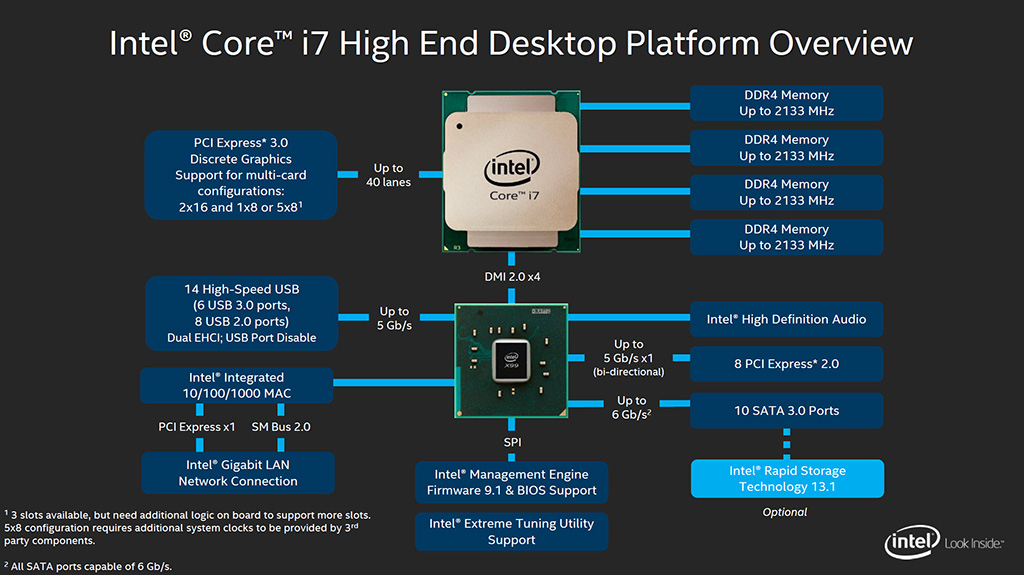
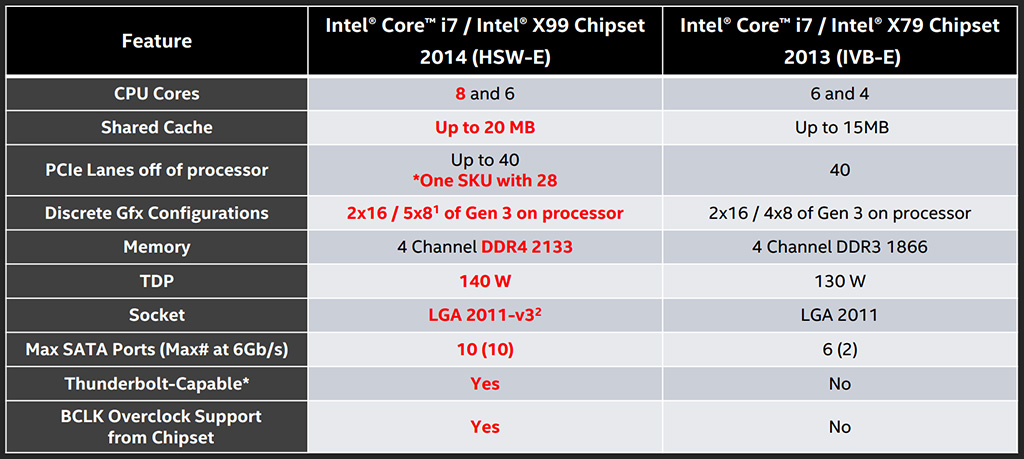
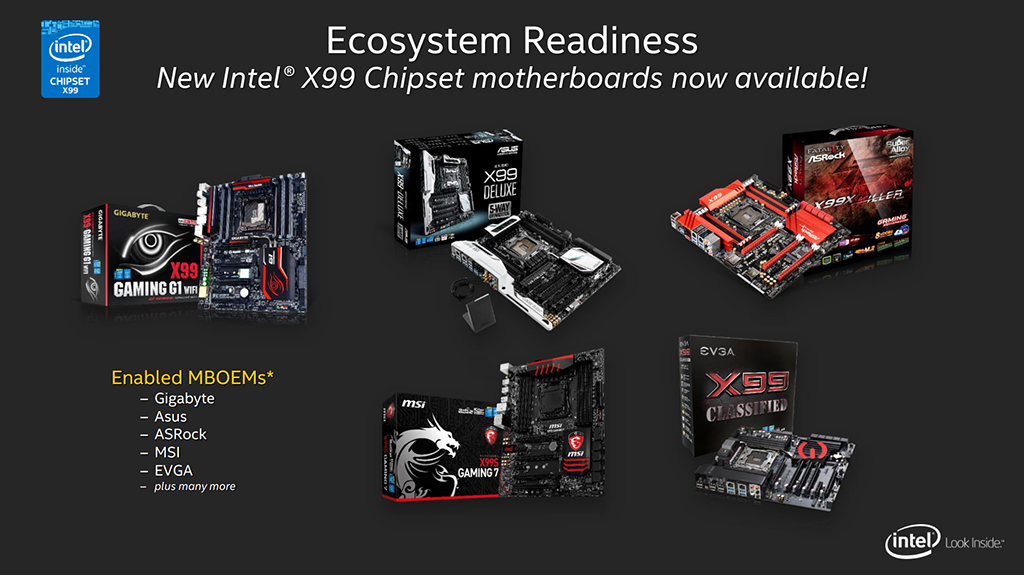
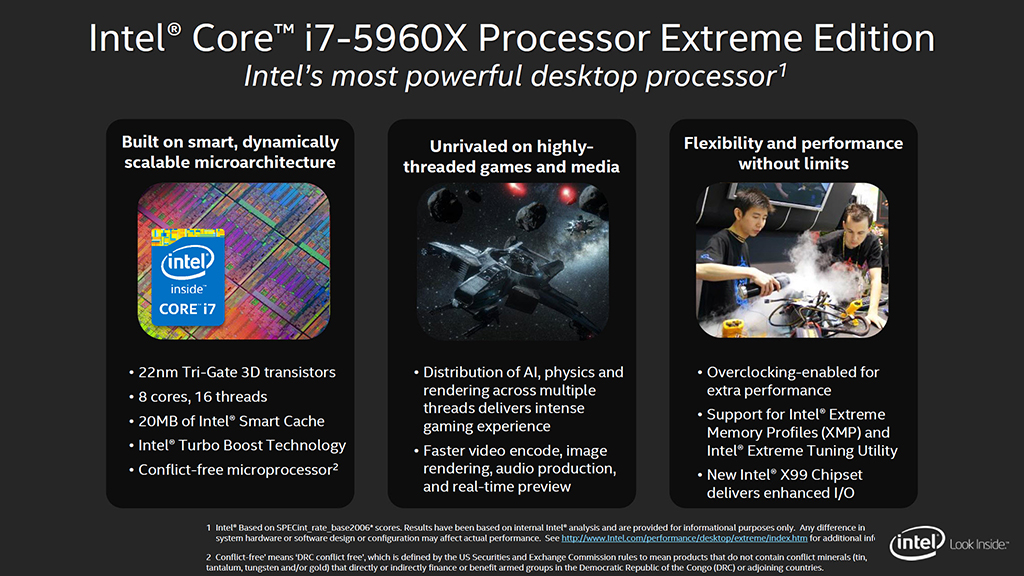
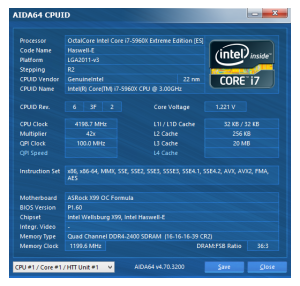
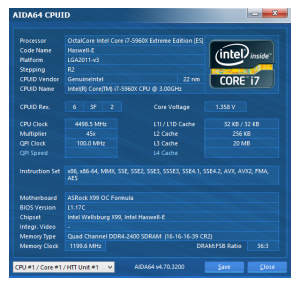
Maybe Santa will send me one..lol